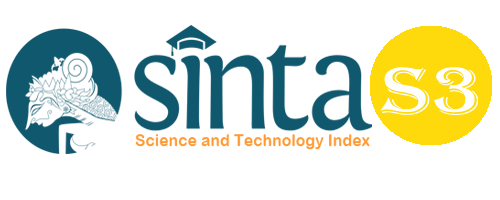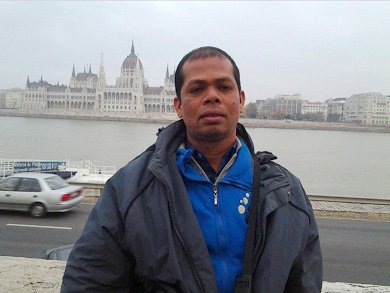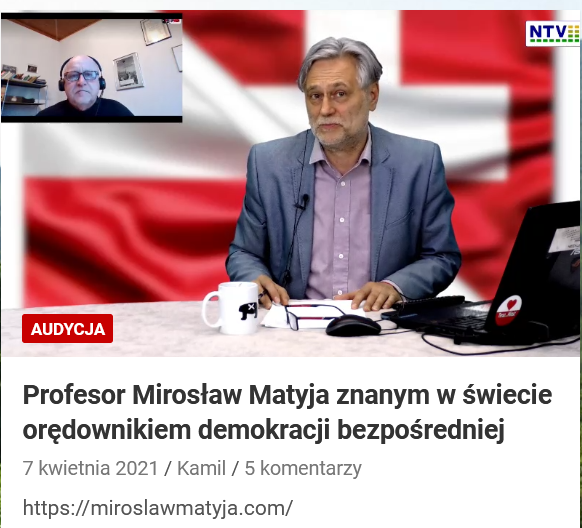Management of Cultural Resources in the Riouwstraat Area (LLRE Martadinata) in Bandung from the Perspective of Cultural Resources Management
Abstract
Riouwstraat area in Bandung from the perspective of cultural resources management (CRM) is an effort to manage cultural heritage areas in the midst of the widespread use of cultural heritage buildings for business purposes. The background of the transfer of cultural heritage functions occurs because of the transformation process that is supported by various factors, namely: economic which is also related to socio-cultural conditions, strategic location, and government policies. The Riouwstraat area management strategy is carried out by identifying and analyzing important values. The solution for managing this area is sought to accommodate the interests of investors while still upholding conservation; synergize the interests of stakeholders with policy makers; and prioritizing the principle of benefit to society.
Keywords
Full Text:
PDFReferences
Adrisijanti, Inajati. 2000. Arkeologi Perkotaan Mataram Islam. Yogyakarta: Penerbit Jendela.
Anonim. RTRW Kota Bandung 2003-2013. Bandung: Bappeda Bandung.
Cohen, Nahoum. 1999. Urban Conservation. Massachusetts: The MIT Press.
Dienaputra, Reiza D. 2005. ”Bandung 1906 – 1970: Studi Tentang Perkembangan Ekonomi Kota” dalam Kota Lama Kota Baru: Sejarah Kota-Kota di Indonesia, Freek Colombijn dkk. (ed.). Yogyakarta: Ombak.
Harastoeti. 2007. Panduan Konservasi Bangunan Cagar Budaya. Diperoleh dari http://bandungheritage.org - bandungheritage.org.
Katam, Sudarsono dan Lulus Abadi. 2006. Album Bandoeng Tempo Doeloe. Bandung: Nav Press.
Kunto, Haryoto. 1985. Wajah Bandoeng Tempo Doeloe. Bandung: PT. Granesia.
. 2000. Nasib Bangunan Bersejarah di Kota Bandung. Bandung: PT. Granesia.
Magdalena, S., Suhatman, R. (2020). The Effect of Government Expenditures, Domestic Invesment, Foreign Invesment to the Economic Growth of Primary Sector in Central Kalimantan. Budapest International Research and Critics Institute-Journal (BIRCI-Journal). Volume 3, No 3, Page: 1692-1703.
Mundardjito. 1990. “Metode Penelitian Permukiman Arkeologi”. dalam Monumen Karya Persembahan untuk Prof Dr. R. Soekmono. Seri Penelitian Ilmiah No. 11 edisi khusus.
Mulyana, Deddy. 2003. Metodologi Penelitian Kualitatif. Bandung: PT Remaja Rosdakarya.
Nazir, Moh. 2005. Metode Penelitian. Bogor: Ghalia Indonesia.
Penjelasan atas Undang-Undang Republik Indonesia Nomor 11 Tahun 2010 tentang Cagar Budaya.
Peraturan Daerah No. 19 Tentang Pengelolaan Kawasan dan Bangunan Cagar Budaya.
Shah, M. M., et al. (2020). The Development Impact of PT. Medco E & P Malaka on Economic Aspects in East Aceh Regency. Budapest International Research and Critics Institute-Journal (BIRCI-Journal). Volume 3, No 1, Page: 276-286
Soepono, Prasetyo. 2002. Lokasi Perusahaan Implikasinya Bagi Kebijakan. Dalam Pidato Pengukuhan Jabatan Guru Besar pada Fakultas Ekonomi UGM. Yogyakarta.
Tanudirjo, Daud Aris. 2003. “Warisan Budaya Untuk Semua Arah Kebijakan Pengelolaan Warisan Budaya Indonesia Di Masa Mendatang”. dalam Makalah yang disampaikan di Kongres Kebudayaan V di Bukittinggi, Sumatra Barat 19-23 Oktober.
. 2006. “Pengelolaan Sumber Daya Budaya di Perkotaan”. dalam Makalah yang disampaikan di seminar Pengelolaan Warisan Budaya di Palembang, 30 Mei.
Undang-Undang Republik Indonesia No. 11 Tahun 2010 Tentang Cagar Budaya.
Voskuil, Robert P.G.A., dkk. 2007. Bandung Citra Sebuah Kota (terjemahan Bandoeng, Beeld van een stad). Bandung: Departemen Planologi ITB, PT Jagaddhita.
DOI: https://doi.org/10.33258/birci.v4i4.3121
Article Metrics
Abstract view : 47 timesPDF - 27 times
Refbacks
- There are currently no refbacks.

This work is licensed under a Creative Commons Attribution-ShareAlike 4.0 International License.

This work is licensed under a Creative Commons Attribution-ShareAlike 4.0 International License.

_.gif)

















_.gif)



